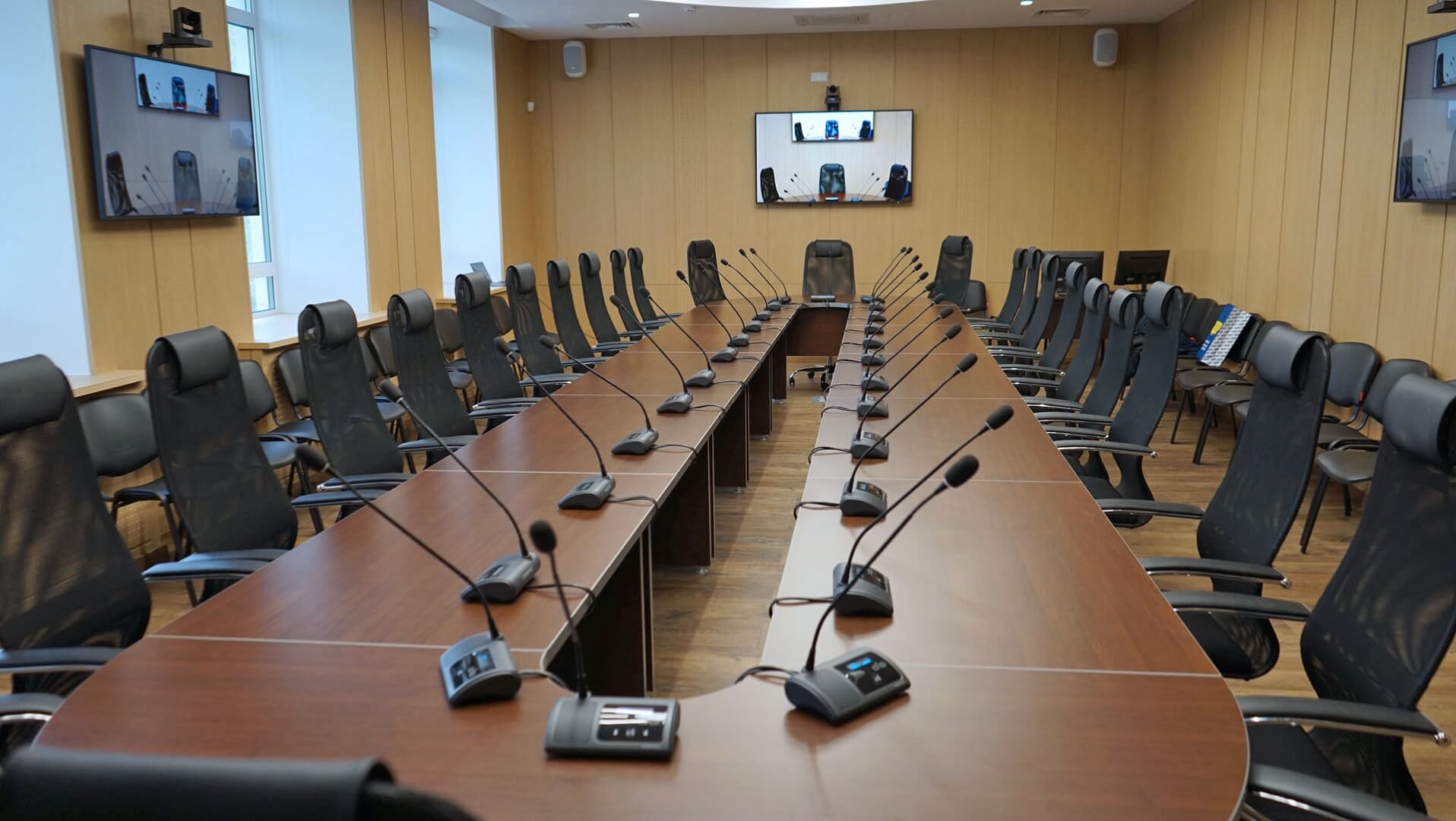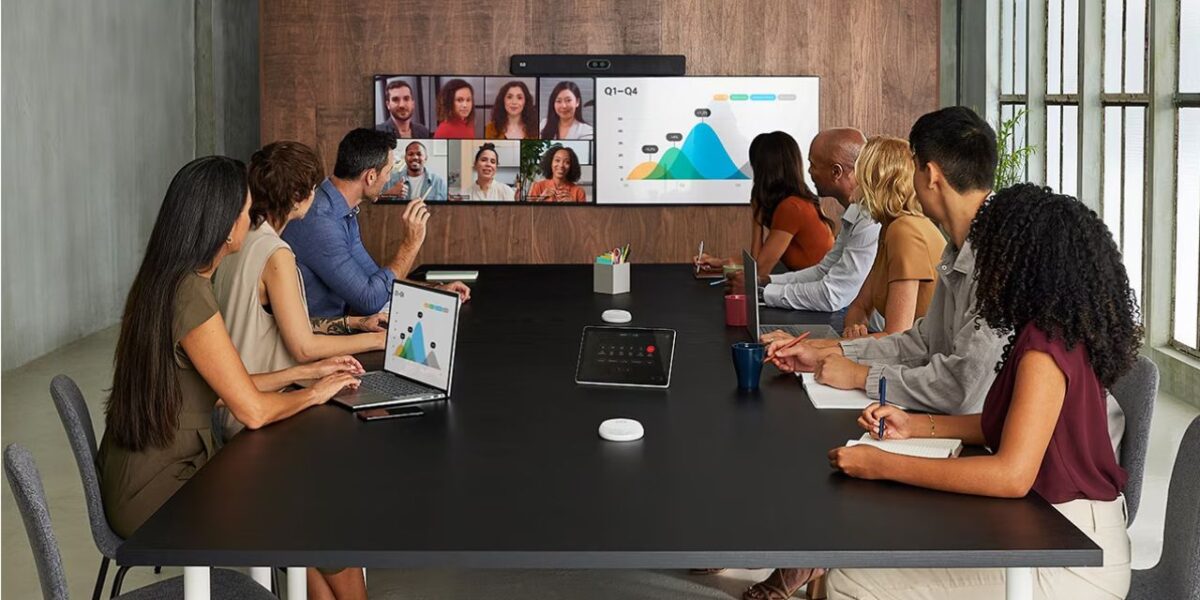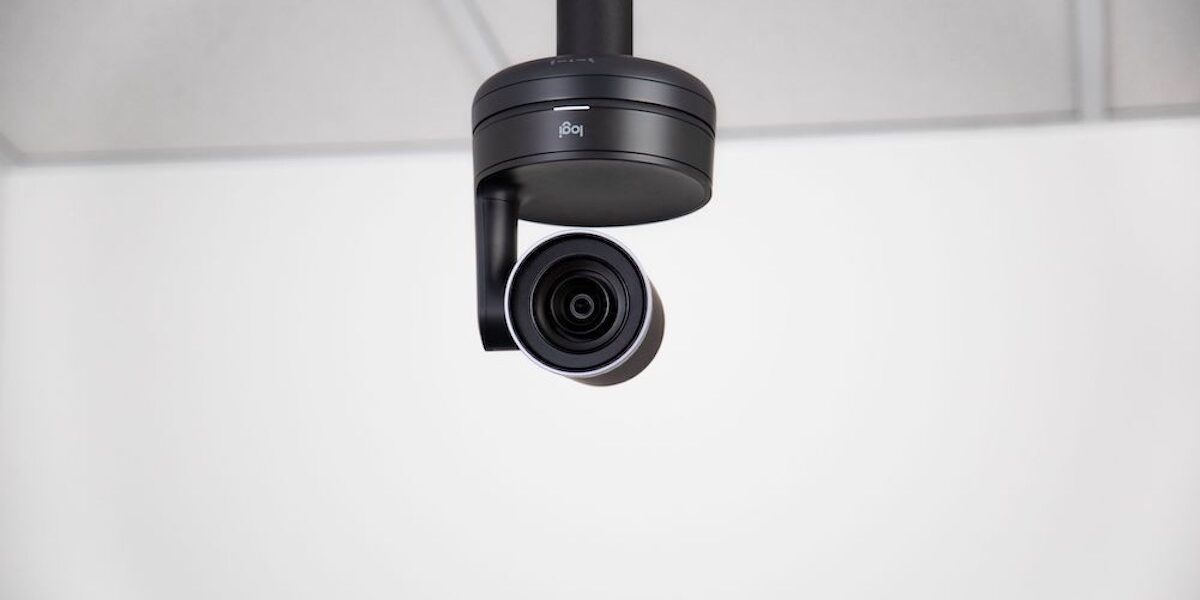When selecting the right speaker for your audio system, it’s essential to consider several factors to ensure you achieve the best sound quality for your needs.
This guide will walk you through the key considerations, from understanding your application to evaluating the specifications that matter most.
1. LISTENER’S LOCATION
When selecting the right speaker for your audio system, the location of the listener plays a critical role in determining the type, placement, and configuration of the speakers. The listener’s position relative to the speakers affects sound quality, clarity, and the overall listening experience. This is the essential first question when choosing speakers. Whether the system is for a single person, 50 people, or 1000 people, the listener’s location dictates the optimal setup.
If the system is for one person, you can precisely optimize the sound for their exact location. This allows for a focused setup, such as stereo or surround sound, to create an immersive experience tailored to that spot.
 For a larger audience, ensuring even sound coverage becomes challenging. A sound system can be perfectly optimized for only one point in space, so compromises are necessary to achieve good sound quality across a broader area. Balancing sound throughout the audience area often involves sacrifices to accommodate varying listener positions. The speaker’s technical specifications provide a coverage angle that describes the vertical and horizontal angles that sound disperses from the speaker. Keep in mind that, some speakers have the same vertical and horizontal coverage angle and some have different coverage angles.
For a larger audience, ensuring even sound coverage becomes challenging. A sound system can be perfectly optimized for only one point in space, so compromises are necessary to achieve good sound quality across a broader area. Balancing sound throughout the audience area often involves sacrifices to accommodate varying listener positions. The speaker’s technical specifications provide a coverage angle that describes the vertical and horizontal angles that sound disperses from the speaker. Keep in mind that, some speakers have the same vertical and horizontal coverage angle and some have different coverage angles.
Speaker’s technical specifications, usually provide a coverage angle that describes the vertical and horizontal angles that sound disperses from the speaker. Take an example of a speaker with a 75-degree coverage angle. That means the vertical and horizontal coverage angles are 75 degrees, but the vertical and horizontal angles aren’t always the same. Some speakers even have variable coverage angles.
When a listener goes outside of the speaker’s coverage pattern, it will start to sound dull, because high frequencies are more directional than low frequencies.
It might seem like the wider the coverage angle, the better… However, there are several reasons why this isn’t necessarily true. One reason for this is typically to achieve a consistent sound level across the entire listening area. When speakers overlap, the sound from multiple speakers adds together at the point of overlap. This results in louder areas where the speakers overlap and quieter areas covered by just one speaker.
2. SPEAKER LOCATION
When designing an audio system, after considering the listener’s location, the next critical question is, “Where should the speakers be located?” Ideally, this should be based on achieving the best sound quality. However, the more practical and often asked question is, “Where can the speakers be located?
In an ideal scenario, speakers should be placed directly in front of the audience to ensure the best sound quality. This positioning allows for optimal sound dispersion and clarity, providing an immersive listening experience.
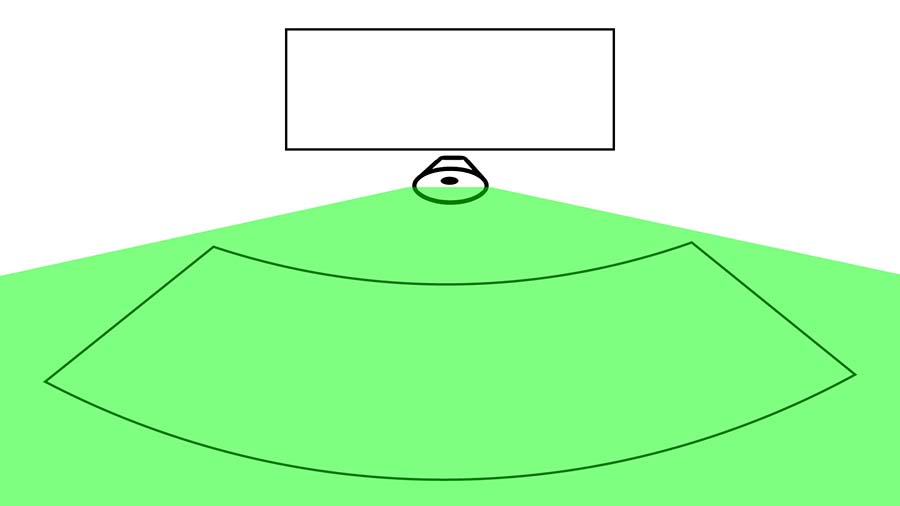
However, practical constraints often dictate speaker placement. Visual aesthetics and functional considerations, such as maintaining clear sightlines for the audience, typically take precedence. If a speaker obstructs the audience’s view, its placement must be adjusted accordingly, even if this means compromising sound quality.
In many environments, the visual appearance of the space is prioritized over the acoustics. This means that while the best position for sound might be central and unobstructed, the speakers often need to be placed where they won’t interfere with the visual experience. This compromise is common in settings like theaters, auditoriums, and large event spaces, where both audio and visual elements are crucial.
For instance, if a ceiling speaker has a 135-degree coverage angle, it might cover a 14ft diameter from an 8ft ceiling height. However, that same speaker will cover a 24-foot diameter from a 10ft ceiling height due to there being more distance for the sound to spread out before reaching the listener. This means that more ceiling speakers are needed to cover the same listening area when the ceiling height is lower.
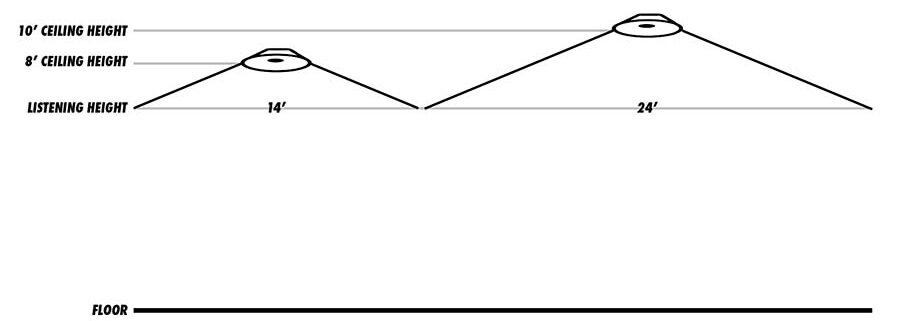
The same principle applies to surface-mounted speakers. Although a 75-degree coverage pattern may appear narrow when the speakers are close to the audience, having a 75-degree speaker on each side of the stage could effectively cover the entire audience as long as there is sufficient distance between the speakers and the audience.
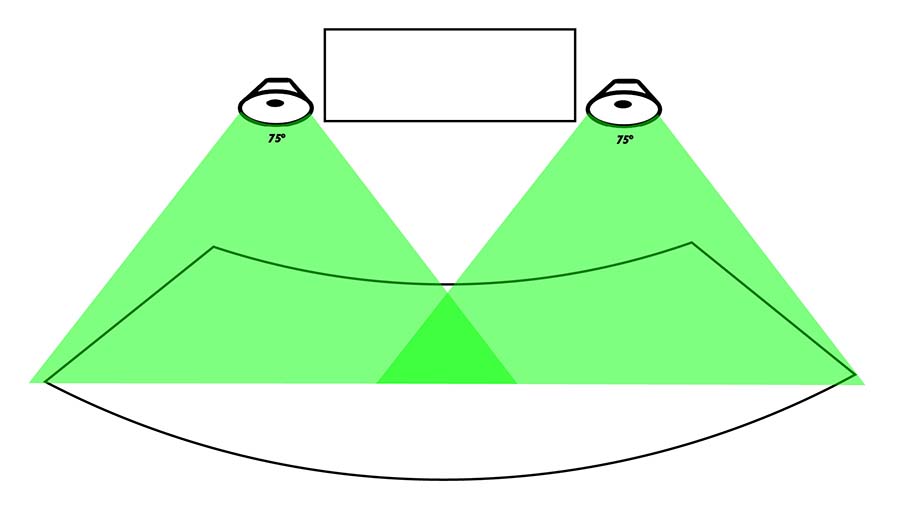
3. LOUDNESS OF THE SYSTEM
Determining the required loudness involves knowing the listener and speaker locations as mentioned above and the target sound level. An audio system target would be between 80 and 100 dB SPL at the listening position. (Please note that leaving an extra headroom is also unnecessary in speaker selection).

Two important specifications for understanding a speaker’s loudness are sensitivity and continuous power handling capacity.
- Speaker sensitivity describes how loud the speaker will be if supplied with a given amount of power. When 1 Watt of power is applied to the speaker above, you can expect a 97dB Sound Pressure Level, measured at 1 meter away from the speaker.
- The continuous power capacity of a speaker indicates how much power it can consistently handle over time without sustaining damage or undergoing permanent changes. This rating reflects the maximum momentary power that can be supplied to the speaker without causing damage. Comparing speakers based on their continuous power capacity is more practical and useful.
Given a speaker that can produce 97 dB SPL at 1 meter away with 1 watt of power from the amplifier, how loud would it be when supplied with 500 watts?
The formula will be;
db = 10 log(power2 / power1)
Where: Power 1 is the wattage from the sensitivity specification and Power 2 is the continuous power capacity.

The difference between 1 watt and 500 watts is nearly 27 decibels. So, by adding 27 to the 97 from the specifications, it is determined that the speaker is capable of producing 124 dB SPL at 1 meter.
Note: Every doubling of power only gives us a 3 dB increase.
With this information, It can determined that the speaker is capable of achieving the target loudness at the listening position.
- Inverse distance law; The inverse distance law states that with every doubling of distance, there is a 6 dB loss in level, making it another reason to know where the speaker will be in relation to the listening position.
For example: If a speaker is placed 10 meters away from the listener.
The formula is;
dB = 20log (Distance 2 / Distance 1)
Where: Distance 1 is the starting distance (1 meter) and Distance 2 is the distance between the speaker and the listening position.

This tells us that there will be about a 20 dB loss over that distance. Subtracting 20 from 124 dB tells us that the speaker will produce 104 dB SPL at the listening position.
So, just to clarify, this means that the speaker should be able to effectively project sound to the listening position from the side of the stage. If the speaker isn’t able to reach a sufficiently high volume at its continuous power capacity, then a more sensitive speaker or one with a higher power handling capacity will be needed.
Conclusion
Finally, technical specifications such as power capacity, and sensitivity must be evaluated. These specifications determine how well a speaker can reproduce different frequencies, handle power, and deliver sound at various volumes. In summary, by considering the application, audience location, speaker locations, and technical specifications, you can select the right speakers to deliver the best possible listening experience tailored to your specific needs and environment.
Choosing The Right Speakers | 3 Questions You Should Ask…

